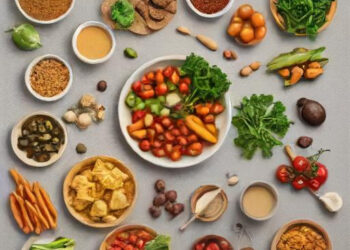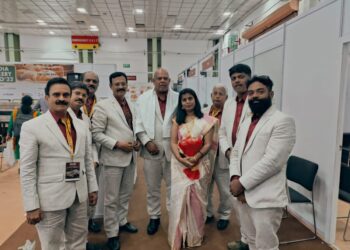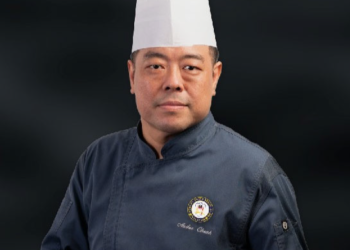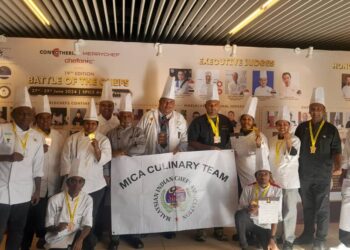–Chander Sarvagyam (csarvagyam@gmail.com)
 Pongal/ Makara Sankranti or Maghi, is a festival day dedicated to the deity Surya . It is observed each year in January. It marks the first day of the sun’s transit into Makara (Capricorn), marking the end of the month with the winter solstice and the start of longer days. The harvest festival associated with those days is known by various names.
Pongal/ Makara Sankranti or Maghi, is a festival day dedicated to the deity Surya . It is observed each year in January. It marks the first day of the sun’s transit into Makara (Capricorn), marking the end of the month with the winter solstice and the start of longer days. The harvest festival associated with those days is known by various names.
No festival is complete without its special food in India. Pongal/ Makar Sankranti is one such festival that is celebrated under different names in various parts of India as mentioned above. Usually observed on the 14th of January, Makar Sankranti celebrates the harvest as well as the winter solstice. Here, we have a list of a few special dishes.
Appalu
The people of Andhra Pradesh and Telangana prepare this sweet dish Appalu, out of wheat flour, rice flour, and jaggery. The dough thus created is then flattened and fried in oil to form a crispy sweet dish. It is offered to God before consumption
Tilwa or Til Ke Laddoo
Tilwa or Til ke Laddoo is a dish from Bihar and Jharkhand. In its preparation, sesame seeds are roasted and mixed with jaggery. This mixture is then rolled into small spheres or laddoos.
Ramdane ke Laddu
Another dish from Bihar, Ramdane ke Laddu is prepared by mixing puffed ramdana or rajgira –Amaranth Grain Powder, cashew-nuts, raisins, and crushed green cardamom seeds with molten jaggery. It is then rolled into balls to form laddus.
Undhiyu
This dish is a specialty of Gujarat and symbolises winter. Prepared especially on the auspicious occasion of Makar Sankranti, Undhiya is a concoction of seasonal vegetables like Surti papdi, yams, egg-plants, unripe bananas, etc., cooked in a deep vessel and served with
Pooris and Bajra Roti.
Ellu Bella
“Ellu Bella thindu olle maathadi” roughly translates to “eat the mixture of jaggery and sesame seeds and speak nothing but good.” Ellu Bella is a dish from Karnataka prepared by mixing sesame seeds, groundnuts, shredded coconuts and jaggery. This dish, along with sugar candy moulds and a piece of sugarcane, is then served on a plate and exchanged with relatives and neighbours on Makar Sankranti.
Ghughute
The people of the Kumauni region of Uttarakhand have a unique way of celebrating Makar Sankranti. In Uttarakhand, this festival is called Ghughutiya and Ghughute is the dish prepared to commemorate the occasion. Wheat flour and jaggery is mixed and this mixture is beaten into different shapes like pomegranate flowers, knives, spirals, etc. Following this, the batter is fried in ghee and strung together to form a garland, and this entire arrangement is called a Ghughute. Children wear these garlands and attempt to feed the sweetmeats to crows as a symbol of welcoming the migratory birds.
Puran Poli
Gulachi Poli or Puran Poli is served as lunch on Makar Sankranti in Maharashtra. In this dish, the puran, or a mixture of chana dal and jaggery, is  stuffed into the small dough rolls. It is then cooked in ghee till it puffs up.
stuffed into the small dough rolls. It is then cooked in ghee till it puffs up.
Makara Chaula
People of Odisha celebrate Makar Sankranti by preparing Makara Chaula. This preparation is a mixture of powdered rice, grated coconut, milk, small sugarcane pieces, ripe banana, sugar, pepper powder, cottage cheese, grated ginger, and pomegranate. Makara Chaula is
served as Prasad on Makar Sankranti.
Pheni
Pheni is a Rajasthani delicacy prepared by frying a well-rolled out flour dough in ghee. It is then garnished with roasted dry fruits and served with sweet milk or sugar syrup.
Ghevar
Ghevar is a disc-shaped sweet dish which is also from Rajasthan. There are three types of Ghevar- plain, Mawa, and Malai Ghevar. While preparing this dish, flour and milk batter is poured in heated ghee and cooked. The Ghevar thus prepared is then dipped in sugar syrup,
garnished with dry fruits, and served.
Gajak
Having originated at Morena, Gajak is a dish prepared as a celebration of Makar Sankranti in Madhya Pradesh. Roasted sesame seeds and cashew-nuts or groundnuts are folded in a mixture of ghee, sugar, and water and then laid on a ghee coated tray. On cooling down, this layer of sesame seeds is then broken into small pieces and served as a sweet dish.
Murukku and Pongal
Murukku is a crispy snack from Tamil Nadu that forms a staple dish during ‘Pongal’ (name of the festival as well as a dish). It is prepared by deep-frying spirals made by dough made up of urad dal, flour, ajwain, and sesame seeds. The sweet dish Pongal traditionally is made with just jaggery rice and moong dal as main ingredients.
Gokul Pithe
Gokul Pithe is prepared in the homes of Bengal to celebrate Poush-Parbon (the name given to Makar Sankranti in Bengal). In its preparation, a mixture of grated coconut and jaggery is stuffed into small balls of flour dough. This ball is then flattened to form a patty which is
then deep-fried in oil or ghee.
Payesh Puli
Payesh Puli is a quintessential dish from Bengal which combines two dishes- Pithe and Payesh- in one. The Pithe is a rice flour dumpling stuffed with grated coconut. It is immersed in a mixture of milk, rice, and jaggery, which forms the payesh and is boiled.
Khichdi
Khichdi is a dish prepared in almost all the states of India that celebrate Makar Sankranti. Khichdi combines rice and pulses along with seasonal vegetables like cauliflowers and green peas and is often served as “Bhog.”
Ganne ke Ras Ki Kheer
Lohri, or the Punjabi celebration of Makar Sankranti, is incomplete without this preparation. Utilizing one of the most widely grown crops of Punjab, sugarcane, the kheer is prepared by mixing sugarcane juice with millets and milk and garnished with roasted dry fruits.
Xandoh
Magh Bihu, or the other name of Makar Sankranti of Assam, is incomplete without this Jolpan. Fried and de-husked rice mixed with curd, jaggery, milk, etc. makes up Xandoh, a morning snack served during this occasion.
Kangsubi
Utilizing the Makar Sankranti staple – sesame seeds, the state of Manipur creates the sweet dish, Kangsubi, to celebrate the festival. A Kangsubi is a baked sesame cake prepared by mixing sesame seeds and sugarcane juice and then diced. The consumption of Kangsubi is
said to purify the soul.
Dahi Chura
An East Indian specialty, Dahi Chura is Chiwra or flattened rice mixed with Dahi or curd. In most East Indian states, the festival of Makar Sankranti commences with the consumption of Dahi Chura at daybreak.
Halwa
No Indian festival is truly complete without Halwa, be it Gajar ka Halwa, Suji ka Halwa, or Atte ka Halwa. Makar Sankranti is no exception to this rule. Although different types of halwas are made in different parts of the country, the most common among them is ‘Sooji
aur Badam ka halwa’, prepared by mixing semolina and dry fruits with milk.
(The author is the director of Vinnca Hospitality. The views are own. Readers can reach him at csarvagyam@gmail.com )







